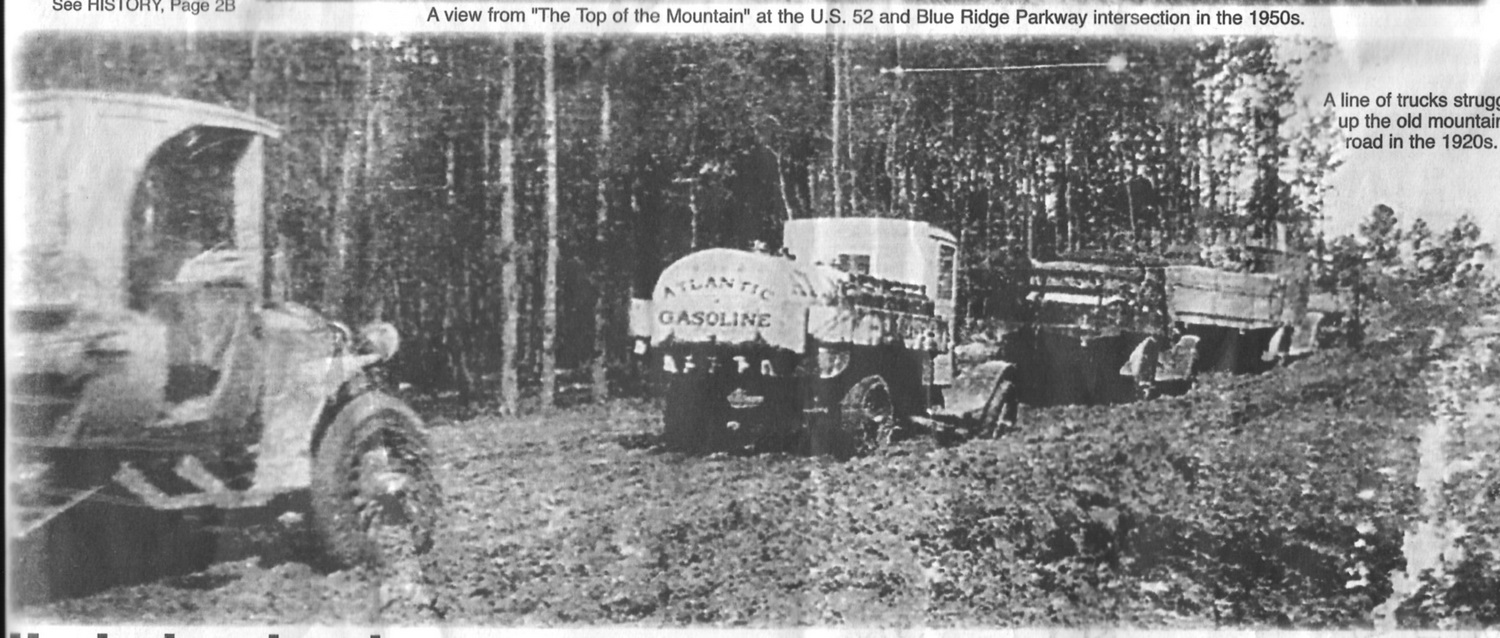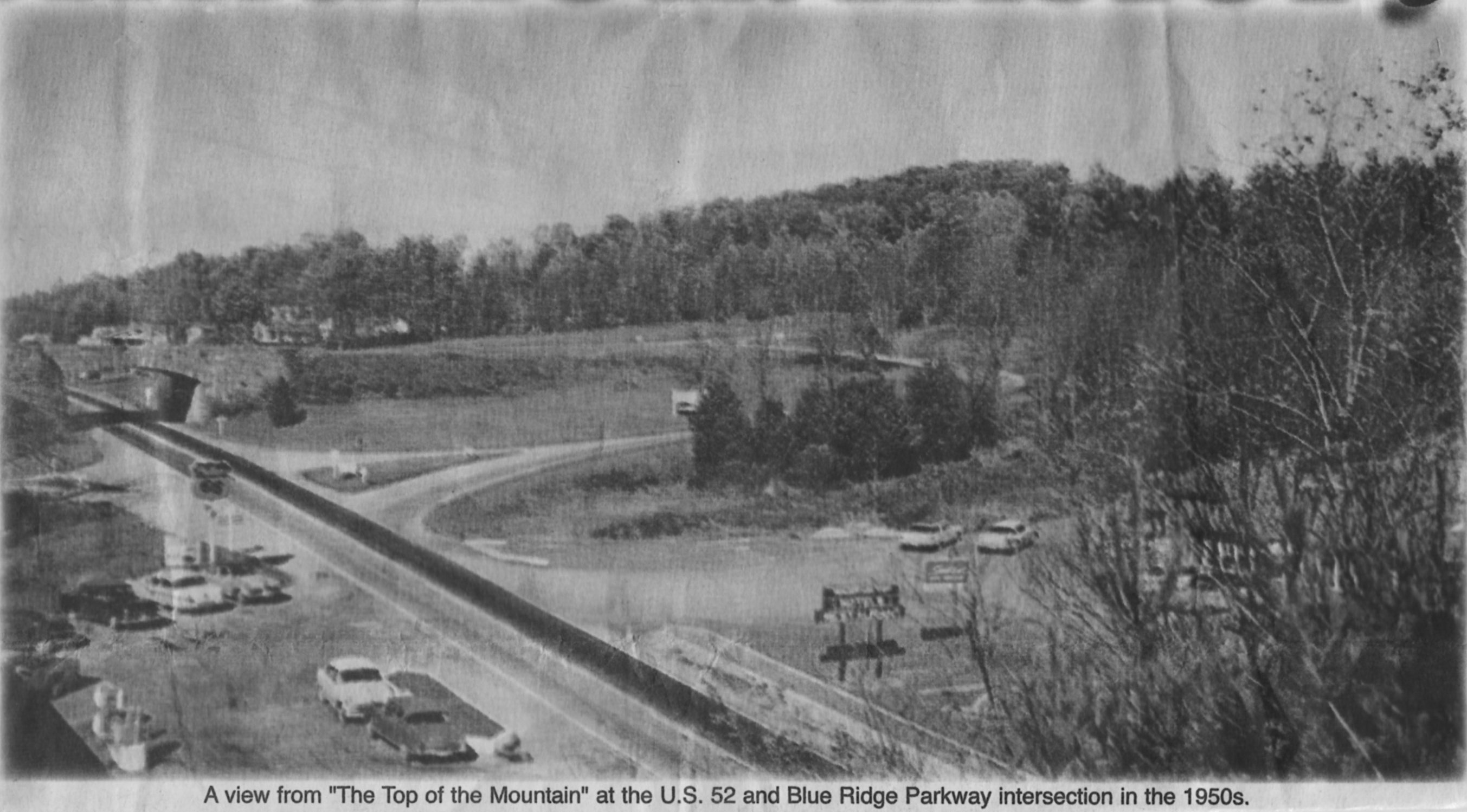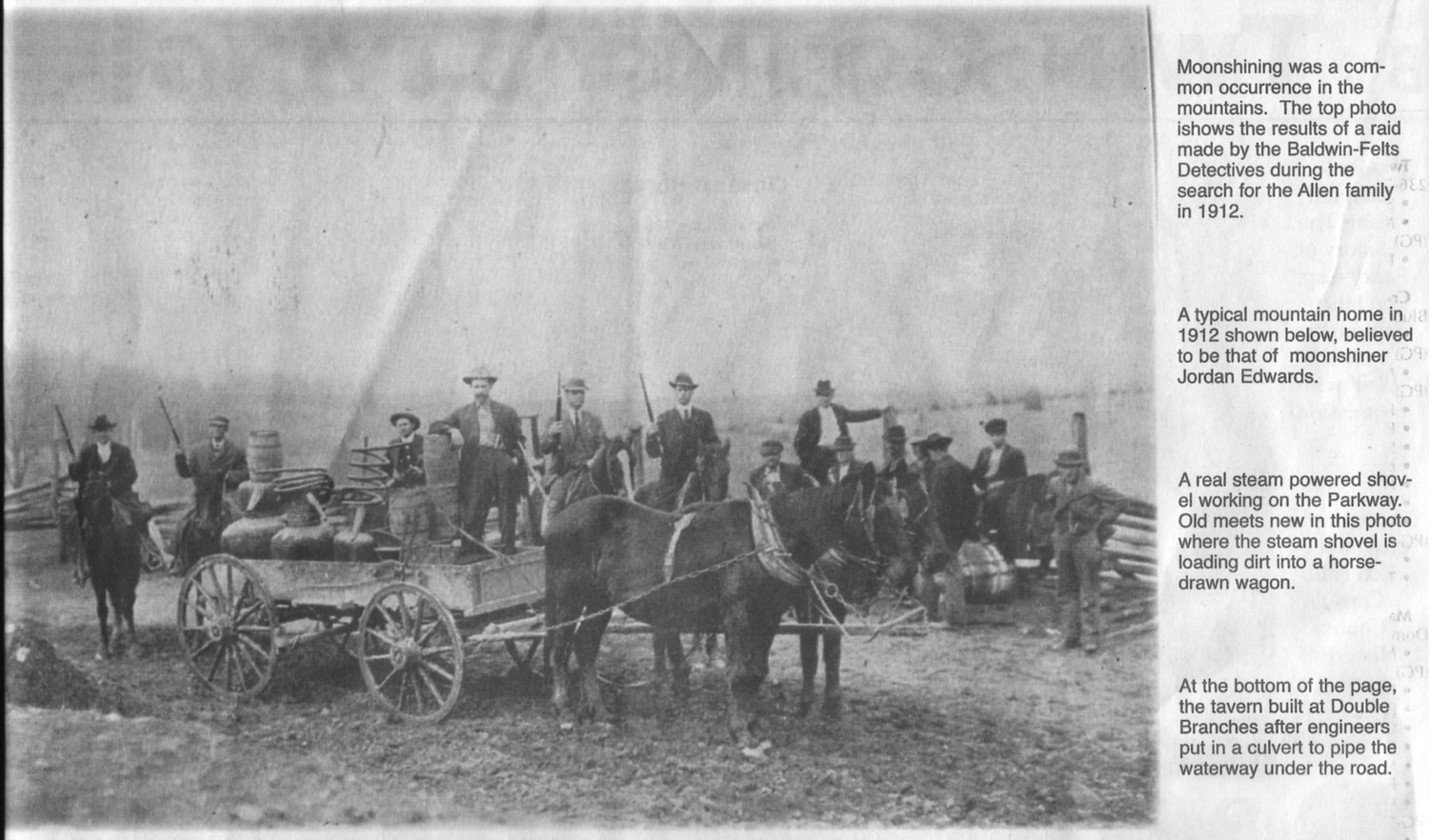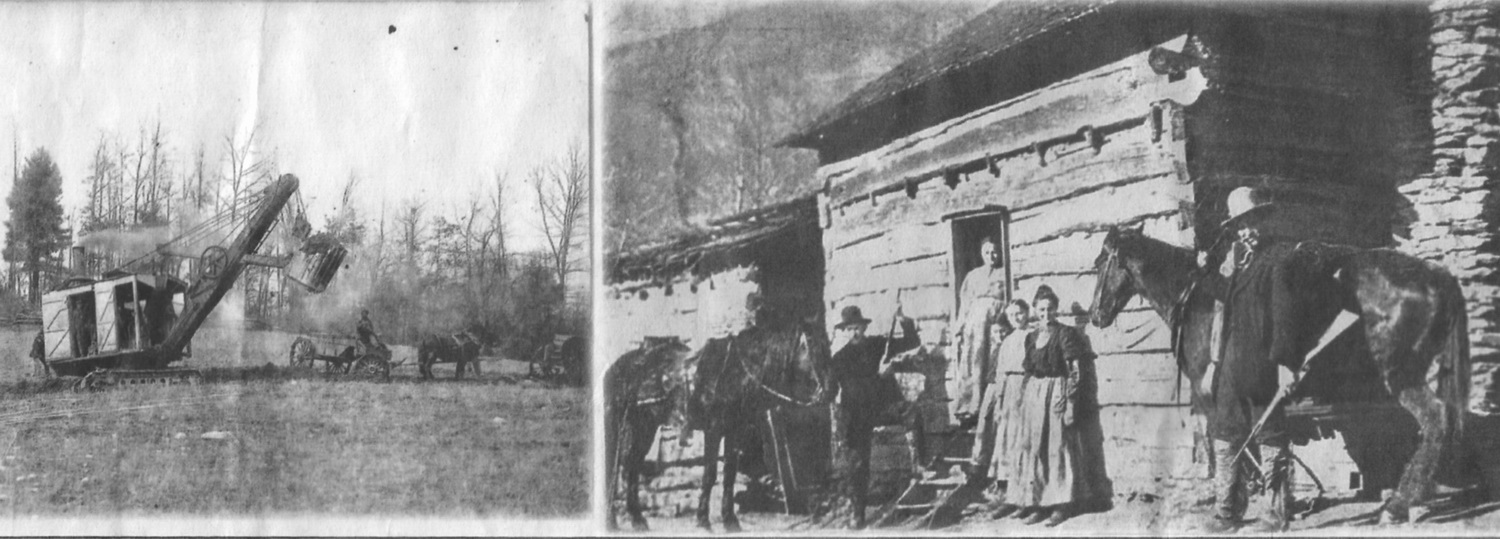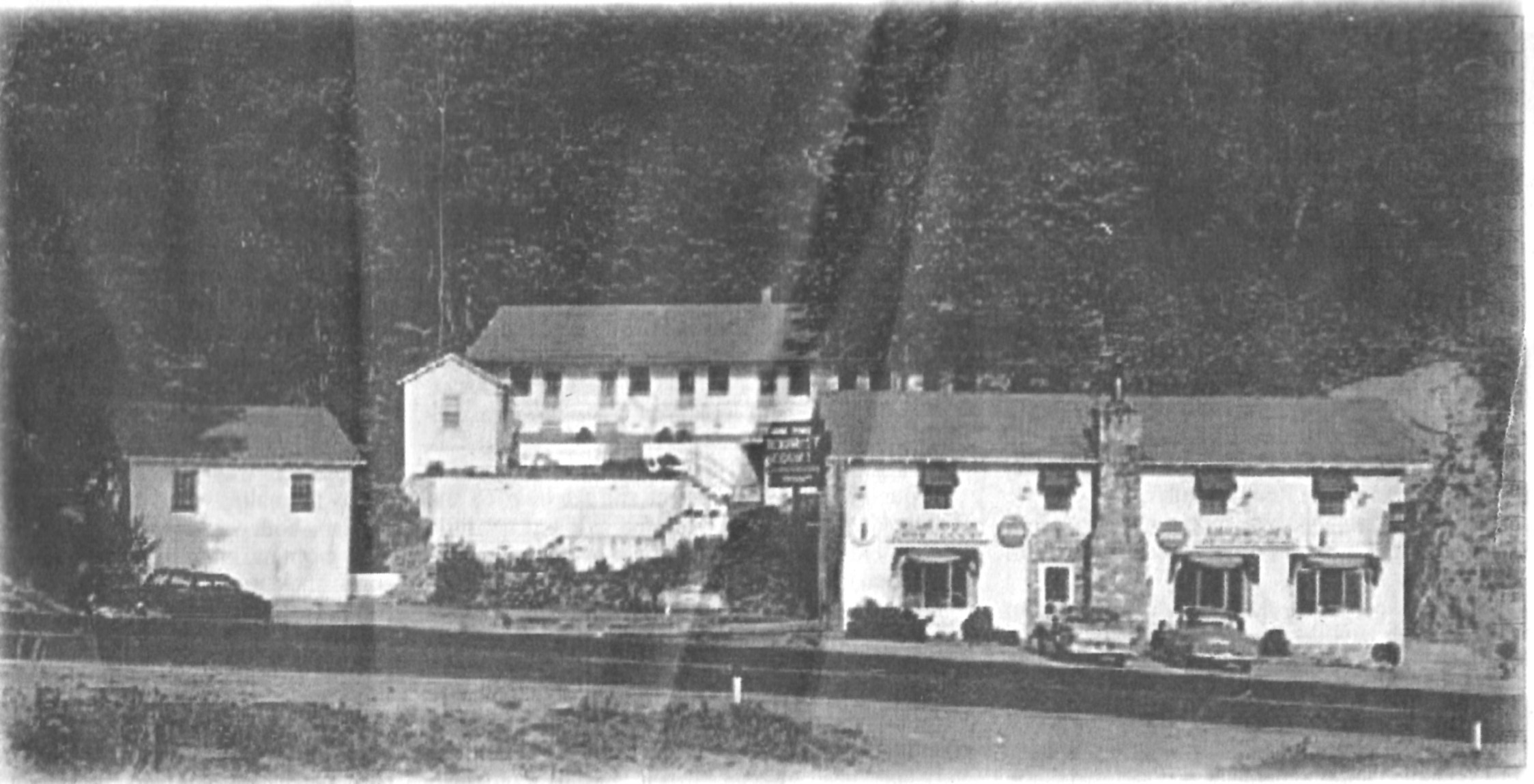Destination History, Mountain PAssage
Through the fog that wafts up the Blue Ridge, Fancy Gap has emerged as the best mountain passage from the Piedmont to the Plateau.
Providing a negotiable -if fog shrouded — passage through the Blue Ridge Mountains has defined Fancy Gap since its earliest days.
From rutted paths for wagons through the lowest spots in the hills, transportation in the Carroll County community evolved and developed to a major connector between Southwestern Virginia and western North Carolina.
.Throughout its history, "Fancy Gap" earned different connotations for different people. leaving impressions that can vary widely depending on the routes they used.
Tourists on the Blue Ridge Parkway find the community an appropriately quiet and quaint place to pull off the winding ribbon of national park.
Residents along the road and politicians from two states had cheered the improvement in commerce that a well-engineered connector could offer.
And speeding motorists along Interstate 77 dread the heavy cloak of mist that sometimes drapes the mountain.
That's a characteristic that even some of the earliest nomads picked up on. as reflected in the original name of "Foggy Camp" bestowed on the area by Native Americans, according to historians.
"Since Fancy Gap is located on the cool crest of the Blue Ridge Mountains, the rising warm, moist air from North Carolina is cooled beyond the temperature for the water it contains, it releases its water vapor into the fog that often blankets the area."
Despite the occasional hazards in the mountain pass, Fancy Gap came into being due to its linkage of the Plateau to the Piedmont.
People with a pioneering spirit first made tracks through the Blue Ridge Mountains, so the story told by community members and historians goes.
As the years went by, their successors continued to try to tame the mountain, using technological advances to make it more accessible.
Spurs and gaps:1786-1850
The early roads in the mountains often followed creeks, deer paths and Indian trails.
But the grades and curves suitable for pedestrian travel often did not facilitate the passage of wagons, so locals set to work building their own roads with axes and shovels.
Families whose land was crossed by a road were often charged with maintenance of that section.
In the mountains, these "home engineered" roads usually crossed at the lowest spots in the mountains, called "gaps" or sometimes up the gentlest slope, which is called a "spur."
The Flower Gap Road and the Good Spur Road were two of the earliest in the area, though in truth they were closer to trails than roads.
It took farmers with wagons of produce three days to drive to Winston-Salem from Fancy Gap, two days to sell their product and three days to drive home again.
"The Good Spur Road, in existence as early as 1786, was too steep for a single team of horses to haul a wagon up the mountain," Fancy Gap historians note. "The wagon teamsters would gather and wait at the bottom of the mountain for other wagons to come along so they might combine horses to pull their wagons up.
"According to local legend, if there was a problem getting up the mountain, a farmer along the way had a team of mules, one whose name was Peter. The farmer would yell. 'Pull, Peter, Pull,' and that area was named 'Peter Pull.'"
Traveling down the mountain wasn't easy either — usually the rear wheels of the wagons were chained to the wagon bed to serve as a brake or sometimes a log was simply dragged down the mountain behind the wagon.
Road traffic was relatively heavy in the late 1700s — especially after Daniel Boone reported riches beyond the mountains of "Virginny and Kaintucke," giving many North Carolinians the inspiration to seek their fortunes in the West.
A man named McEdwards built a large log tavern at the foot of Good Spur Road in what is now Carroll County. McEdwards' tavern served the public for nearly 100 years.
About 1810, John Morris built a log tavern at the top of Good Spur Road and it was in operation for about 40 year
The Fancy Road:
Circa 1810-1850s
Ira Blair Coltrane, born in 1815 an illegitimate son of a single mother and later a self-made engineer and a colonel in the Confederate Army. became a teamster at 15 years old, when he helped hip grandfather drive loaded wagons up the steep incline.
"The legend is that he saw a better route up the mountains across the valley and remarked that it would make a 'Fancy Road,"' according to historians.
In 1849, work on the Tazewell Court House and Fancy Gap Turnpike began with Coltrane as a contractor.
He built the road from Fancy Gap to the foot of the mountain, in the process making the dream of his youth a reality.
This route differed from the road today as the earlier version crossed the top of the mountain further east. Where Yankee Creek now crosses the highway, the road turned and went down the mountain further to the west.
Around 1855, James L. Mitchell built a tavern in Fancy Gap at the top of the mountain. It served as a hotel and summer resort for many years, but was razed during the building of the Blue Ridge Parkway in the 1930s.
Horse power:
Circa 1860-1920s
The Fancy Gap Turnpike was used as a stagecoach route from the South to the Great Lakes.
The horse-drawn coaches would find a tortuous and steep five-hour climb up the mountain, during which they would stop halfway up the mountain to let the animals rest. Historians say this area was known as Double Branches, where two streams cascaded across the road.
In the 1890s the railroad came as far north as Mount Airy. N.C., and Virginia farmers would drive their herds of cattle and sheep down Fancy Gap Turnpike to the railroad for shipment to points beyond.
After the advent of the automobile. Virginia and North Carolina collaborated in building a graveled road from Mount Airy to Fancy Gap. completed in 1922. At Double Branches a culvert was placed beneath the road and a tavern and motel were built around where the water had raced.
Automobiles and trucks of that era still had great difficulty getting up the mountain — motorists too would stop at the Double Branches for a break, cooling their automobiles along with themselves. This tavern/motel still sits along U.S. 52, just south of Fancy Gap.
Even after the road was improved from that of 1928. it still caused nightmares for truckers and many songs have been written about its perils.
In 1928. the road was further leveled and straightened and it was advertised that a car could now negotiate the grade in "high gear."
From there, it would still take nearly another half century for the road to evolve into the road that still follows contours of the mountain.
As a destination
Nearby are the natural caves known as Devil's Den, which were major tourist attractions as far back as the 1890s, when local guides would conduct tours over 600 feet into the mountainside.
Work on the "longest road ever planned in the United States," the Blue Ridge Parkway. began in 1935 at the height of the Great Depression and passed through Fancy Gap.
"In the surrounding mountains, the road passed through farms in such remote areas that the owners had never seen an automobile." historians say.
The beautiful cut-stone parkway bridge built by imported Italian stone masons sits atop the spring that is the beginning of Yankee Creek.
It got its name because it was here that two Combs brothers ambushed an encampment of Union Occupation Troops after the Civil War and slaughtered them all, according to the Fancy Gap history. One of the brothers wore the Yankee uniform jacket to church for years afterward with the bullet hole still in the back of it.
In 1912. the mountains around Fancy Gap were searched by the Baldwin-Felts Detective Agency for the fugitives of the Allen family who were involved in the famous courthouse shootout in nearby Hillsville.

